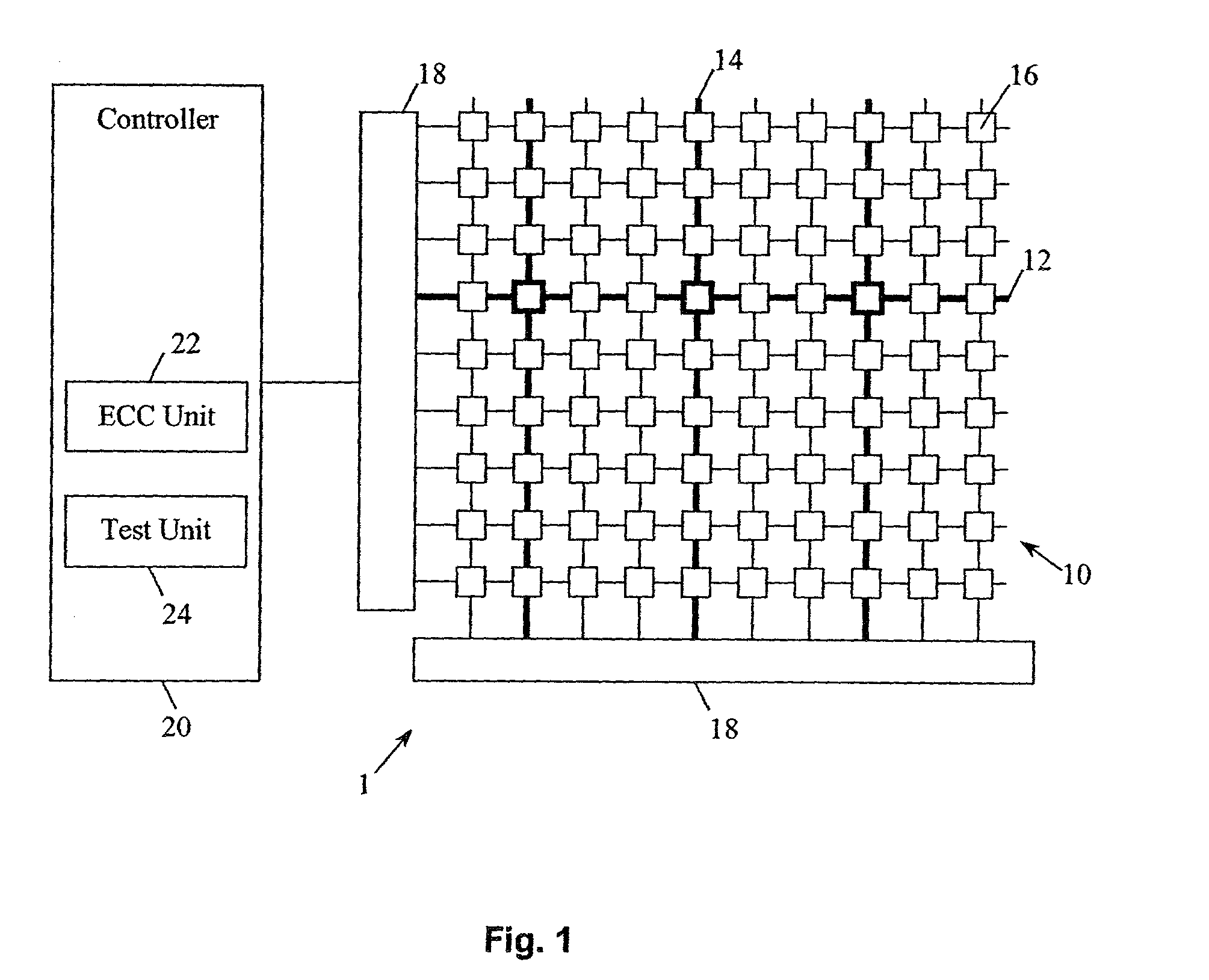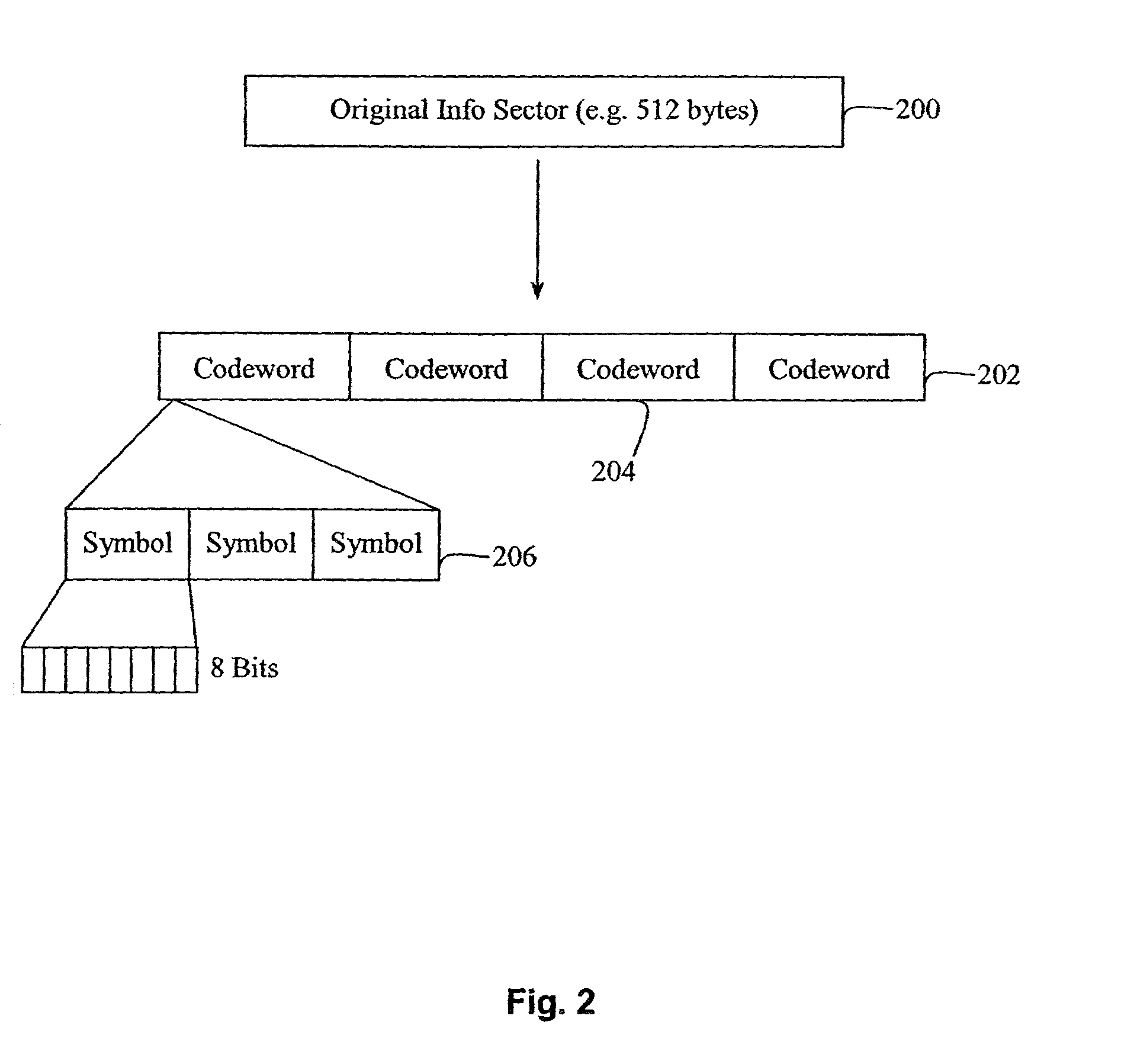Manufacturing test for a fault tolerant magnetoresistive solid-state storage device
a solid-state storage and fault-tolerant technology, applied in the direction of digital storage, error detection/correction, instruments, etc., can solve the problems of inability to manufacture mram devices that are subject to limitations, inability to accept stored data loss, and low manufacturing yield of commercially acceptable mram devices
- Summary
- Abstract
- Description
- Claims
- Application Information
AI Technical Summary
Benefits of technology
Problems solved by technology
Method used
Image
Examples
Embodiment Construction
[0020]To assist a complete understanding of the present invention, an MRAM device will first be described with reference to FIG. 1, including a description of the failure mechanisms found in example forms of MRAM devices. A preferred logical data structure will then be described with reference to FIG. 2, employed when storing ECC encoded data in the device in use. A storage cell will be described in more detail referring to FIG. 3. A preferred method for reading ECC encoded data from an MRAM device in use will be described with reference to FIG. 4. Finally, the preferred method for testing an MRAM device will be described with reference to FIG. 5.
[0021]FIG. 1 shows a simplified magnetoresistive solid-state storage device 1 comprising an array 10 of storage cells 16. The array 10 is coupled to a controller 20 which, amongst other control elements, includes an ECC coding and decoding unit 22 and a test unit 24. The controller 20 and the array 10 can be formed on a single substrate, or...
PUM
 Login to View More
Login to View More Abstract
Description
Claims
Application Information
 Login to View More
Login to View More - R&D
- Intellectual Property
- Life Sciences
- Materials
- Tech Scout
- Unparalleled Data Quality
- Higher Quality Content
- 60% Fewer Hallucinations
Browse by: Latest US Patents, China's latest patents, Technical Efficacy Thesaurus, Application Domain, Technology Topic, Popular Technical Reports.
© 2025 PatSnap. All rights reserved.Legal|Privacy policy|Modern Slavery Act Transparency Statement|Sitemap|About US| Contact US: help@patsnap.com



